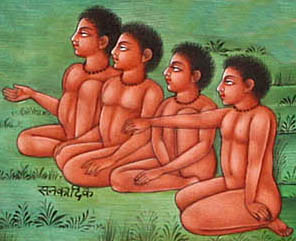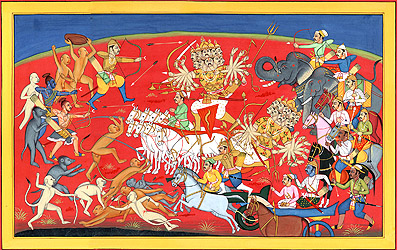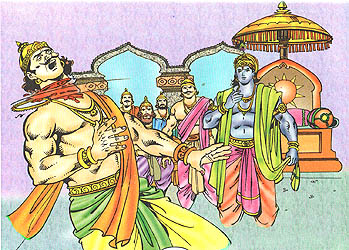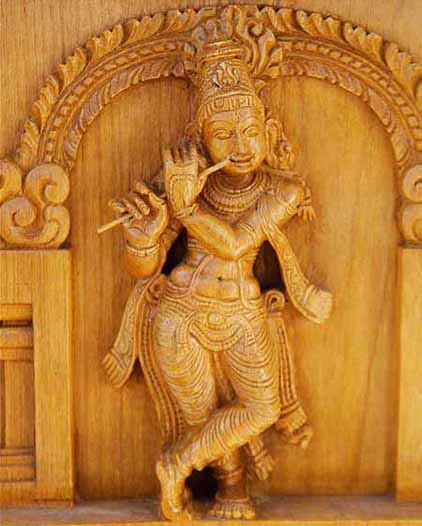P.J.
0
The Avatars of Lord Narayana
(With the blessings of Sriman Narayana Wish to start new Threads about Each Avatar of Sri Narayana)

Hinduism allows for countless deities but usually acknowledges “the big three” (trimurti): Brahma (the Creator), Vishnu (the Preserver) and Shiva (the Destroyer). Since Brahma’s job is already done, hardly any attention is given to him. Among the millions of temples and shrines in India, only two (that I’ve heard of) are dedicated to the creator. In terms of popular worship Brahma is replaced by Devi (the goddess, Shakti). Shiva’s has a particular appeal and his job is to destroy the universe at the time of the great dissolution (pralaya). As the preserver of life and the universe, Narayana (Vishnu/Hari) enjoys the greatest appeal. He is most famous for his avataras; his direct intercessions for humanity’s sake. Vishnu’s couch and king of serpents, Adi Sesha is often incarnated along side Vishnu to act as a side-kick.

The word ‘avatara‘ comes from “to descend”. This refers to God coming down (descent) in the flesh (incarnation) into the world of men. Divine incarnation is a theme taken up around the world and obvious in the case of Jesus (“God made flesh”). Popularly, there are ten avatars (dasavataras) of Vishnu but many other legends exist (sometimes 22 avatars). Some disagreement arises over the identity of the ninth incarnation. Some say that it is the Buddha and that he led people away from the dharma; this is a widely held misconception, even among Indians. If we follow the legends recounted in the Harivamsa and Bhagavata Purana, the eight incarnation is Balarama and the ninth is Sri Krishna.
Narayana always manifests himself with purpose and always at a critical moment for humanity. In the Bhagavadgita, Krishna says: “Whenever and wherever there is a decline in dharma; whenever and wherever the dharma deviates from the path of righteousness to destruction and a predominant rise of unrighteousness— at that time I will incarnate and descend Myself again and again to save the humanity.” (IV:7). Sounds like a compassionate reason; rather like the familiar John 3:16.
Dr. Rukmani called to my attention that the avatars sequentially follow evolution; they ascend from simple to more complex incarnations. The first is a fish, followed by a tortoise and a boar; then a half-man/half-lion, a dwarf and finally humans. Dr. Rukmani also taught me the subtle difference between the human avatars: “Rama was ‘man as God’ and Krishna was ‘God as man'”.
The dasavataras are as follows:

Each of the ten incarnations offers us beautiful stories and often powerful lessons. Some have retained their appeal in legends of their own and helped to increase the vast wealth of Indian literature and imagination. There are even a number of asanas that are directly or indirectly inspired by the avatars and their stories (I once gave a three hour class based solely on those postures while telling the stories). I propose to write a series of posts recounting the adventures of Lord Narayana in the form of his ten avatars. I have always enjoyed these stories and I hope you will too.
Om Namo Narayanaya
https://srisatchmo.wordpress.com/category/stories-legends-parables/page/3/
More to come in the coming weeks
(With the blessings of Sriman Narayana Wish to start new Threads about Each Avatar of Sri Narayana)

Hinduism allows for countless deities but usually acknowledges “the big three” (trimurti): Brahma (the Creator), Vishnu (the Preserver) and Shiva (the Destroyer). Since Brahma’s job is already done, hardly any attention is given to him. Among the millions of temples and shrines in India, only two (that I’ve heard of) are dedicated to the creator. In terms of popular worship Brahma is replaced by Devi (the goddess, Shakti). Shiva’s has a particular appeal and his job is to destroy the universe at the time of the great dissolution (pralaya). As the preserver of life and the universe, Narayana (Vishnu/Hari) enjoys the greatest appeal. He is most famous for his avataras; his direct intercessions for humanity’s sake. Vishnu’s couch and king of serpents, Adi Sesha is often incarnated along side Vishnu to act as a side-kick.
The word ‘avatara‘ comes from “to descend”. This refers to God coming down (descent) in the flesh (incarnation) into the world of men. Divine incarnation is a theme taken up around the world and obvious in the case of Jesus (“God made flesh”). Popularly, there are ten avatars (dasavataras) of Vishnu but many other legends exist (sometimes 22 avatars). Some disagreement arises over the identity of the ninth incarnation. Some say that it is the Buddha and that he led people away from the dharma; this is a widely held misconception, even among Indians. If we follow the legends recounted in the Harivamsa and Bhagavata Purana, the eight incarnation is Balarama and the ninth is Sri Krishna.
Narayana always manifests himself with purpose and always at a critical moment for humanity. In the Bhagavadgita, Krishna says: “Whenever and wherever there is a decline in dharma; whenever and wherever the dharma deviates from the path of righteousness to destruction and a predominant rise of unrighteousness— at that time I will incarnate and descend Myself again and again to save the humanity.” (IV:7). Sounds like a compassionate reason; rather like the familiar John 3:16.
Dr. Rukmani called to my attention that the avatars sequentially follow evolution; they ascend from simple to more complex incarnations. The first is a fish, followed by a tortoise and a boar; then a half-man/half-lion, a dwarf and finally humans. Dr. Rukmani also taught me the subtle difference between the human avatars: “Rama was ‘man as God’ and Krishna was ‘God as man'”.
The dasavataras are as follows:
- Matsya (fish)
- Kurma (tortoise)
- Varaha (boar)
- Narasimha (half-man/half-lion)
- Vamana (dwarf)
- Parashurama (Rama with axe)
- Rama (Prince of Ayodhya)
- Balarama (Krishna’s elder brother)
- Sri Krishna (King of Dwaraka, cow-herd of Vrindavana, playful child)
- Kalki (the future avatar)
Each of the ten incarnations offers us beautiful stories and often powerful lessons. Some have retained their appeal in legends of their own and helped to increase the vast wealth of Indian literature and imagination. There are even a number of asanas that are directly or indirectly inspired by the avatars and their stories (I once gave a three hour class based solely on those postures while telling the stories). I propose to write a series of posts recounting the adventures of Lord Narayana in the form of his ten avatars. I have always enjoyed these stories and I hope you will too.
Om Namo Narayanaya
https://srisatchmo.wordpress.com/category/stories-legends-parables/page/3/
More to come in the coming weeks












